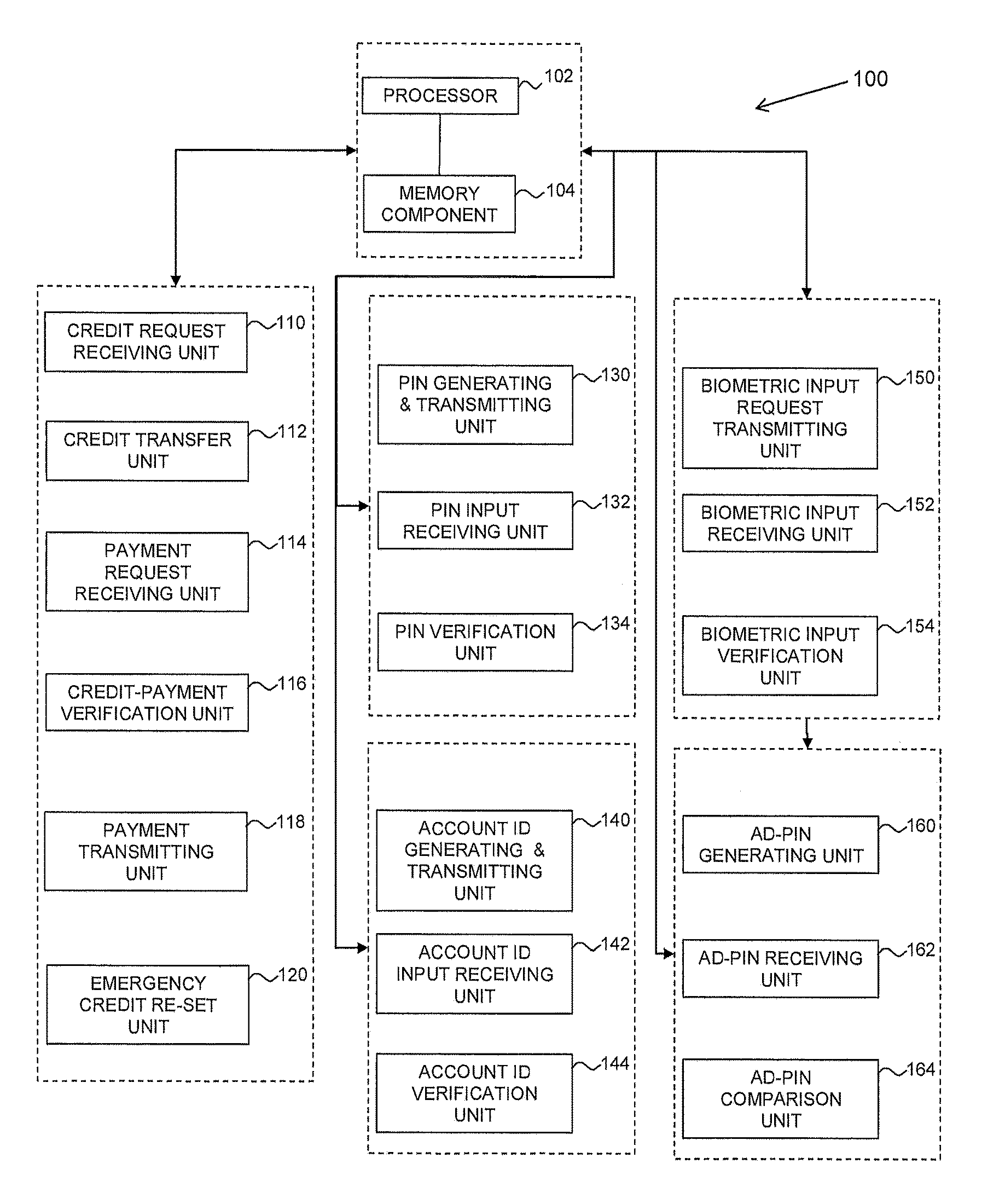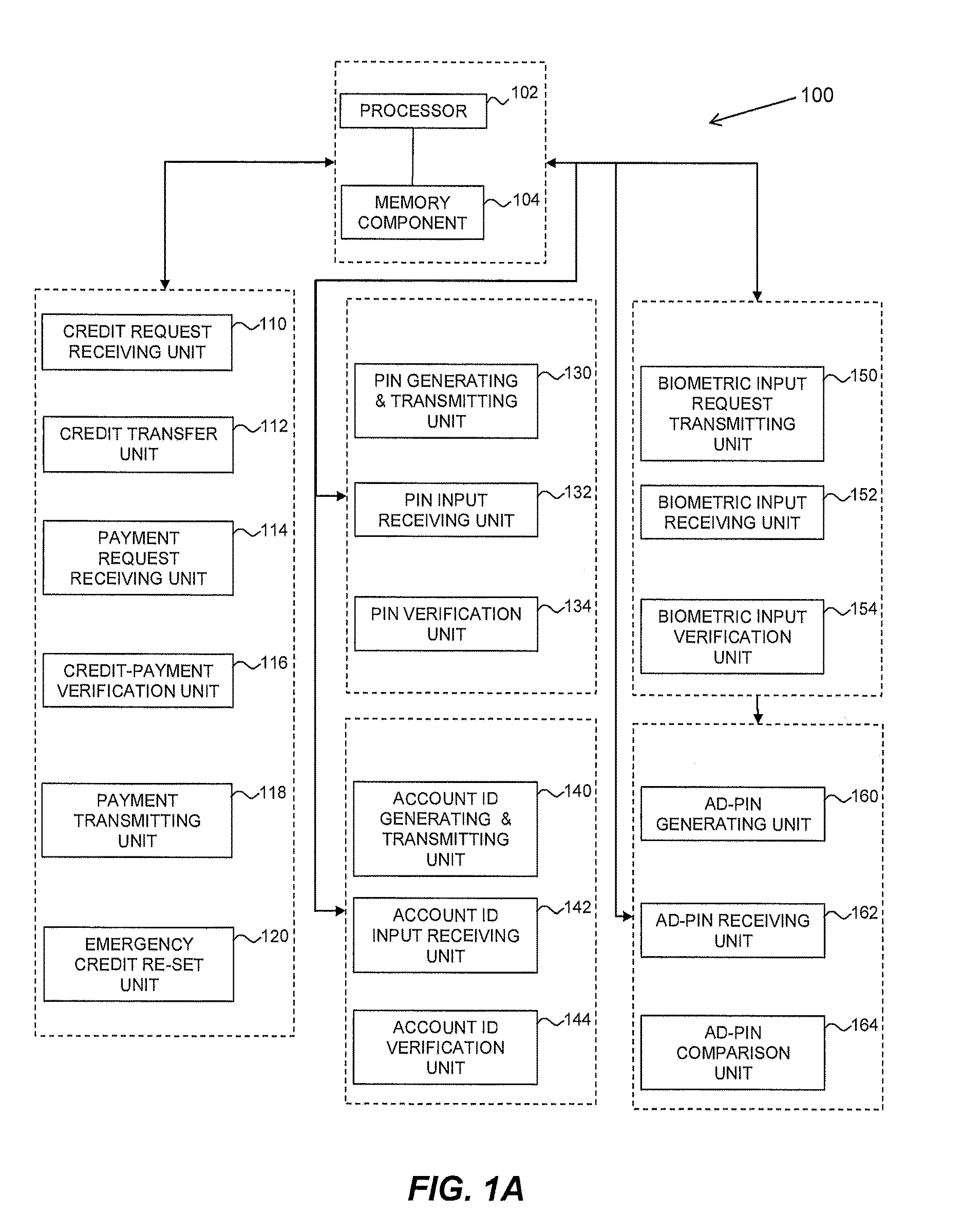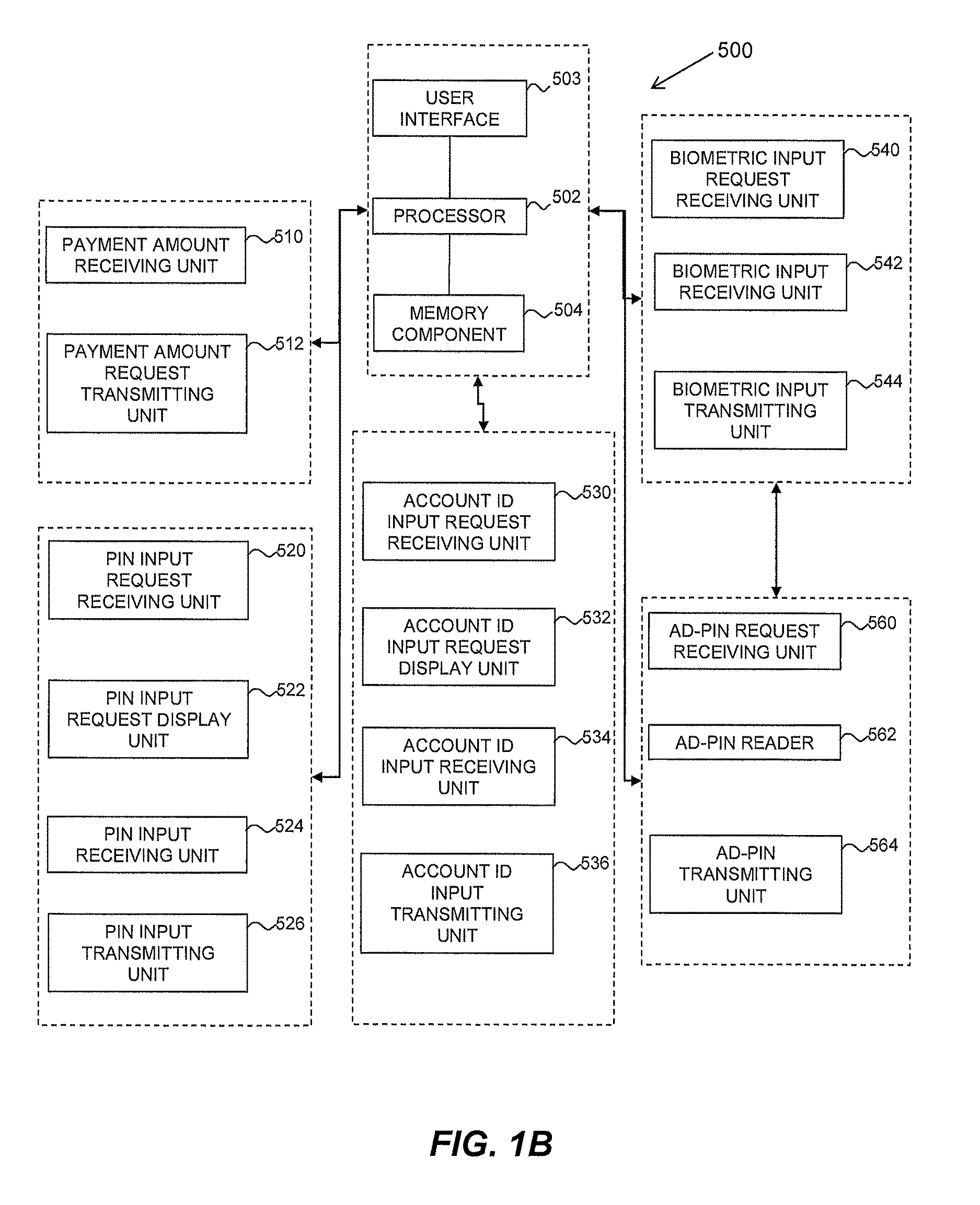Method and system for secured processing of a credit card
a credit card and secured processing technology, applied in payment protocols, instruments, payment architectures, etc., can solve the problem that the credit card or other customer device stolen does not provide value to the thi
- Summary
- Abstract
- Description
- Claims
- Application Information
AI Technical Summary
Benefits of technology
Problems solved by technology
Method used
Image
Examples
example 1
Card-In-Hand Payment Transaction
[0115]This example is schematically depicted in FIGS. 2A to 2E, and relates to the use of the authorization server system to process a payment made by the customer using a point-of-sale credit card terminal, which in this case serves as both the customer interface device and as the merchant server.
[0116]Referring to FIG. 2A, the merchant's point-of-sale (“POS”) cash register 202 calculates a total payment amount. The total payment amount is transferred to merchant's credit card terminal 204. To begin the transaction, the customer provides the credit card information (e.g., multi-character credit card account number, and cardholder name) using the credit card terminal by swiping the magnetic stripe of the credit card 206 into a magnetic stripe card reader, inserting the electronic chip of the credit card into a chip reader, placing the electronic chip near a contactless card reader, or manually keying in information into a keypad of the credit card ter...
example 2
NFC-Enabled Mobile Computing Device Payment Transaction
[0130]This example is schematically depicted in FIGS. 3A to 3C and relates to the use of the authorization server system to process a payment made by a customer using a mobile computing device connected to the internet that communicates using near-field communication (NFC) technology with a merchant's NFC payment terminal. By way of non-limiting examples, the mobile computing device may be a tablet computer, a smart phone, or a wearable smart watch.
[0131]The mobile computing device has a processor and a memory component which stores a set of instructions (hereinafter referred to as the “Mobile Dedicated Secure Transaction Application” (MDSTA)). The set of instructions may be executed by the processor to implement the following functionality:[0132](a) storing digital / electronic versions of the customer's credit card (E-credit card), gift cards, loyalty cards, government issued identification information and the like for NFC use;[...
example 3
Standard Online Personal Computer (PC) Transaction
[0146]This example is schematically depicted in FIGS. 4A to 4D and relates to the use of the authorization server system to process a payment made by a customer using a computing device, such as a personal computer, connected to the internet.
[0147]The bank's authorization server system has a processor and a memory component which stores a set of instructions (hereinafter referred to as the “PC Dedicated Secure Transaction Application” (PC-DSTA)). The set of instructions may be executed by the processor to implement the following functionality:[0148](a) storing digital / electronic versions of the customer's credit card (E-credit card), gift cards, loyalty cards, government issued identification information and the like for NFC use;[0149](b) storing merchant-specific shopping templates which contain all the information needed to fill in the required fields for a shopping cart for a specific merchant, to facilitate multiple transactions ...
PUM
 Login to View More
Login to View More Abstract
Description
Claims
Application Information
 Login to View More
Login to View More - R&D
- Intellectual Property
- Life Sciences
- Materials
- Tech Scout
- Unparalleled Data Quality
- Higher Quality Content
- 60% Fewer Hallucinations
Browse by: Latest US Patents, China's latest patents, Technical Efficacy Thesaurus, Application Domain, Technology Topic, Popular Technical Reports.
© 2025 PatSnap. All rights reserved.Legal|Privacy policy|Modern Slavery Act Transparency Statement|Sitemap|About US| Contact US: help@patsnap.com



